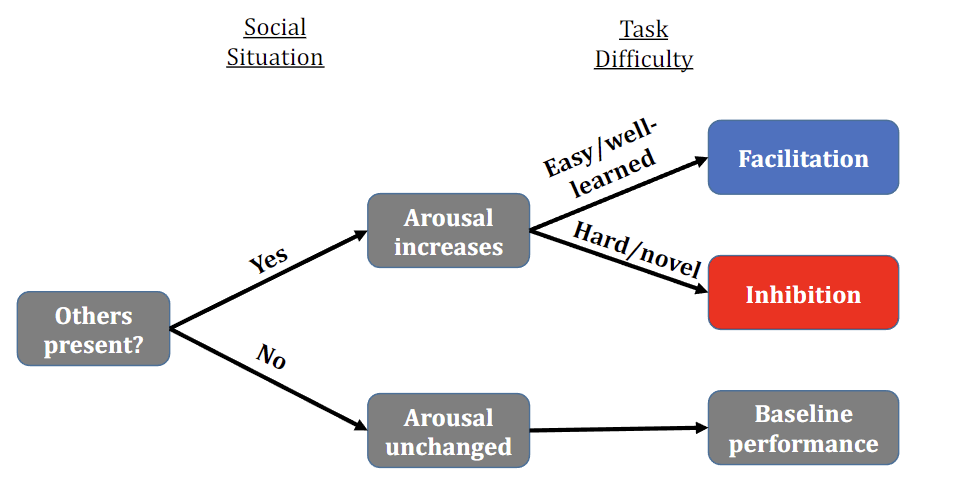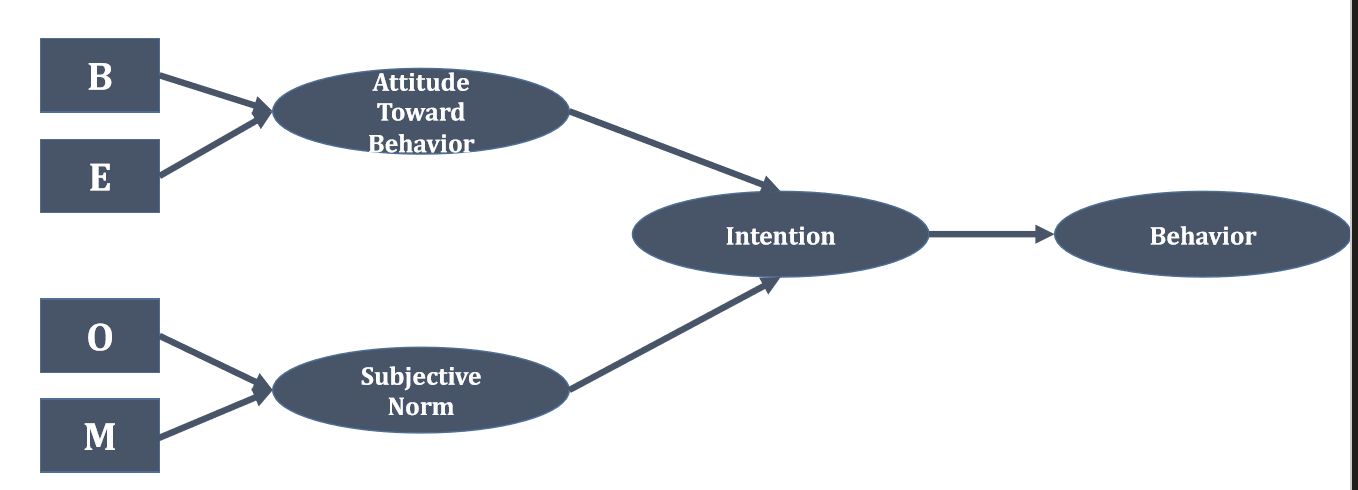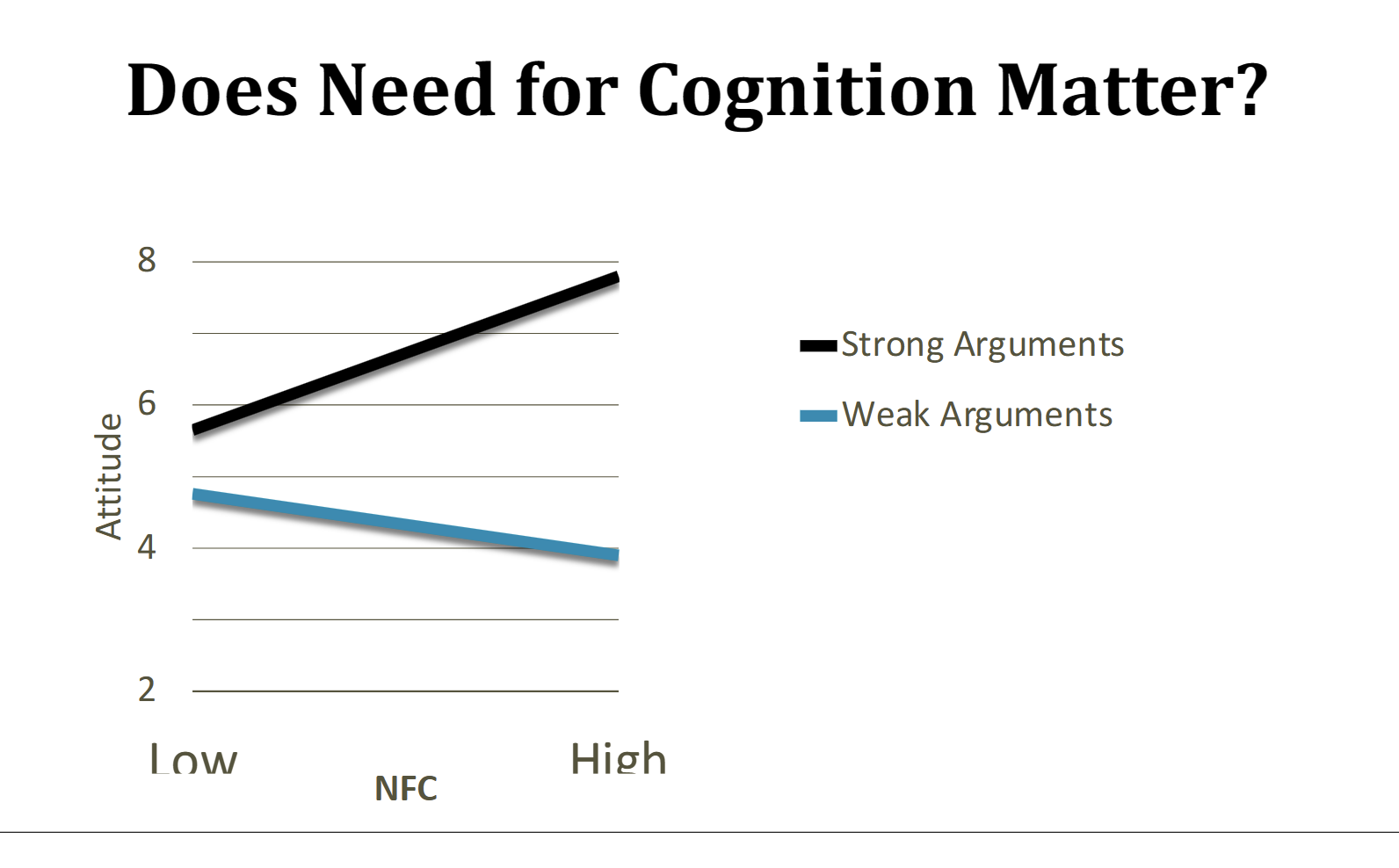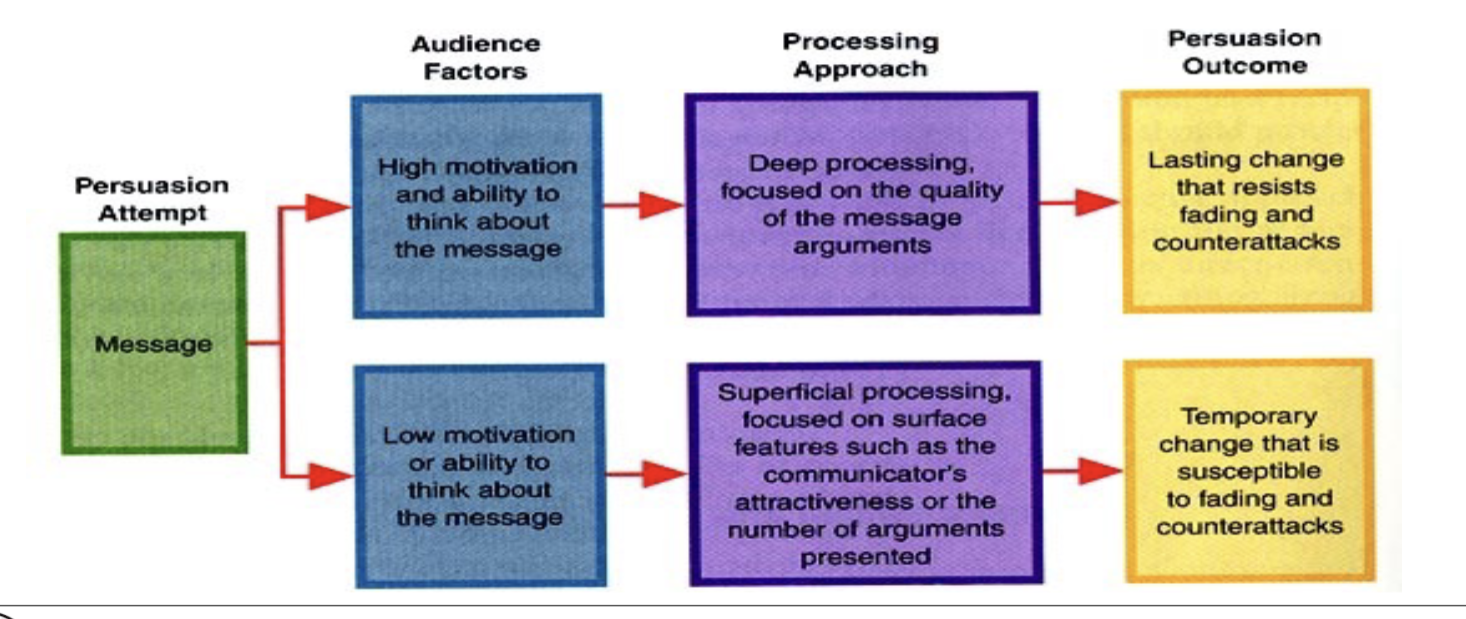Cornell COMM 2760 Flashcards
1/87
Earn XP
Description and Tags
Name | Mastery | Learn | Test | Matching | Spaced |
|---|
No study sessions yet.
88 Terms
What type of questions do we (communication scientists) ask?
empirical questions
Constructs, Operationalization, Constraints
Construct: define phenomenon of interest
Operationalization: how to operate the construct
Constraints: what are we limiting this to?
Design: Behavioral observation
only examining behavior, no sorts of interference
Design: surveys
some sort of testing to collect data on participants
Design: experiment
idk its an experiment. important to note that it can be in realistic environments.
Design: Meta-analyses
using multiple studies and methods to find average and range of results. usually higher quality
Mere presence of others sometimes leads to… (two options)
Social facilitation or social inhibition
Social facilitation
the tendency to perform better on a task when in presence of others
Social inhibition
the tendency to perform worse on a task when in presence of others

Generalized Drive Theory (define and draw a graph if you’re that passionate about it)
mere presence creates general arousal (a “drive”) that increases the likelihood of the organism’s dominant response.
dominant response
the organism’s most likely reaction to a given stimulus
Evaluation apprehension
an alternative explanation to mere presence. perhaps the thought that somebody is WATCHING, not just present, affects the behavior.
conformity
adopting the position (real or imagined) of the majority in a given situation
two reasons why we conform
For information: Informational social influence, when we believe others are correct in their judgement.
For acceptance: Normative Social influence, when we desire to gain acceptance and abide by social norms.
Code-switching
behavior adjustment (speech, appearance, behavior, expression) to optimize comfort of others in exchange for fair treatment, quality service, and employment opportunities.
Ego:
The person we are analyzing
Alter:
people connected to the ego
nodes
people in the network (ego + alter)
ties/edges
connection between nodes, can be one-way or mutual
cluster
a group of nodes
strong ties and weak ties
strong ties are your closest networks, frequent interaction and exposure
weak ties are not your closest networks, however learn/experience new things, and better to discuss important matters
norms
what people think should do; average
normative behavior influenced by three categories:
Individual behavior (social referents)
Summary information about a group
Institutional signals
two types of social norms
(which and what) type of social norm works better in a situation like: organization wants to stop littering, so they have two different signs
please do not litter
many others haved littered here, making this place ugly af
injunctive norms: what most others approve or disapprove of (subjective)
descriptive norms: what most others actually do (absolute; more powerful; usually don’t know)
in the situatio described, the second sign WILL NOT BE USEFUL, because it insinuates that there is a norm of literring, so people will continue to follow that norm! This is an example of descriptive norms.
focus theory of norms
whichever norms are made accessible (in focus) have most influence.
messages have the most influence when norms (injunctive and descriptive) are aligned
nudge
a subtle way to influence people’s behavior. not an intervention.
Compliance and the 4 parts of it
changes in behavior that are elicited by direct request
Reciprocity
Commitment
Scarcity
Authority
Conformity: Reciprocity
we should repay others for what they give us
sense of obligation to reciprocate, or else not part of the societal norms
Door-in-the-face technique
On reciprocity
influencer starts with an extreme request that is likely to be rejected, then retreats to a smaller request (the one they wanted all along)
Commitment
Once a person takes a position, they are subsequently inclined to behave in ways that are consistent with that position.
norm to be consistent, plus cognitively easy to be consistent.
Foot-in-the-door technique (FITD)
influencer starts with a small request that is likely to be accepted, then works up to a larger request (the one wanted all along).
Compliance: Scarcity
opportunities seem more valuable to us when they are less available
common marketing technique
things become scare, we lose freedom, and most people stongly dislike losing freedom.
loss averse
humans are loss averse: losing something typically feels more bad than gaining something feels good.
Compliance: Authority
we are more likely to comply when the person making the request has power over us.
socialized early in life to comply with authority figures.
sometimes negative consequences for not complying with authority figures.
obedience
changes in behavior that are produced by commanded authority.
note: obedience is by command, complicance is by request
Studies have high ___ validity while experiments have high ___ validity
now, define external and internal validity
what is culture?
what does culture do?
LEC: from influence to persuasion
a set of meaning that a group in a time and place come to adopt or develop
it can faciliate smooth social coordinate
clarify group boundaries
Individualistic Culture vs Collectivist Culture
LEC: from influence to persuasion
Individualistic Culture:
personal-emphasized
views people as unique
encourage self-expression and emphasize competitiveness
Collectivist Culture:
social-emphasized
views people as part of a group
discourages self-expression
emphasizes group harmony
The coordinating function of culture
LEC: from influence to persuasion
to persuade, want the message to align with the culture
How are power relations formed? How does it affect persuasion?
LEC: from influence to persuasion
Social power involves asymmetric control over valued resources in social relations
people with different social positions affects their ability to persuade
What are Latitudes of Acceptance and Latitude of Rejection
LEC: from influence to persuasion
Latitude of Acceptance: the zone where people will listen and change to agree with one
Latitude of Rejection (Determinant of attitude change?) the zone where people will not listen and not agree with one.
What is attitude? What are the components of an attitude?
LEC: origins and functions of attitudes
Definition: a construct that represents your evaluation of a person, object, or idea with some amount of favor or disfavor.
Components:
an effective response (evaluation that something is good or bad)
an attitude “object” (just the thing being evaluated)
What are the origins of attitudes? (three main things)
LEC: origins and functions of attitudes
Personal experience
experiences we have with attitude objects can influence our attitudes about them
Social learning
norms in our society can influence our attitudes about objets
Genetics
attitudes more similar among identical than fraternal twins
what are the origins of attitudes that are underlying processes? (3 things)
LEC: origins and functions of attitudes
Cognitively based attitudes: based primarily on our thoughts about an attitude object
hannah note: this is our evaluation.
Affectively based attitudes: based primarily on our feelings about an attitude object
hannah note: probably “I” statements
Behaviorally based attitudes: based on our behavior/action toward an attitude object. (fondness of something more likelyl to approach the object)
What are the three functions of attitudes? (3)
LEC: origins and functions of attitudes
Knowledge function: Give us information about objects
understand preferences and behavior of individuals
provide broader insights about groups and cultures
Identity function: help us to express who we are
Behavioral function: guide us towards the things we like and away from the things we don’t like.
How do narratives work?
LEC: origins and functions of attitudes
They operate through a transportation into a narrative world (texts, movies,etc)
when the “traveler” leaves their world they return somewhat changed
this creates implications for the attitudes and behaviors of travelers
there is little critical processing or counter-argumentation during transportation
Mean-world syndrome
LEC: origins and functions of attitudes
The tendency for television viewers to perceive the world as more dangerous place than it actually is, given the medium’s heavy focus on violence-related content.
this is part of cultivation theory
cultivation theory
LEC: origins and functions of attitudes
The idea that media “cultivates” or shape users’ perceptions about their social world.
Explicit Measurement (what is it, what material do we usually use, the steps between a question and a response)
LEC: Measuring Attitudes
Collect data, then work towards infer the attitude.
usually using self reports
In general, the participant answers what they think a researcher is asking:
Understanding the question
Recalling relevant behavior
inference and estimation
mapping the answer onto the response format
“editing” the answer for reasons of social desirability
Pros and cons of open and close ended questions
LEC: origins and functions of attitudes
Open: anything (relevant goes). However, the participant could just not answer the question
Closed: limited to options the researcher but excludes potentially relevant options the researcher forgot
Frequency scales and reference periods
(Hannah note: only have my own interpretation)
LEC: origins and functions of attitudes
Frequency scale: I think it’s how you scale your answers, so like negative numbers elicits failure, so people are less likely to pick negative numbers on a scale with positive numbers.
Reference periods: how a value is viewed in social norms. So for example, 9 is considered big in context of 1-10, while 300 is considered smaller in the context of 1-1000.
Likert’s method of summated ratings
LEC: origins and functions of attitudes
participants are presented with numerous statements related to an attitude object and rate the extent to which they agree with each statement. (1-5: strongly disagree, disagree, neither agree nor disagree, agree, strongly agree)
attitude is summed score across statements.
Osgood’s technique of semantic differential scales
LEC: origins and functions of attitudes
participants are presented with an attitude object along with a series of bipolar adjective scales
asked to indicate how they feel toward the object by marking one of seven categories along each scale
attitude is summed score across items.
Explicit vs implicit attitudes
if we feel positive towards an attitude object, what do we do? negative towards an attitude object, what do we do?
LEC: origins and functions of attitudes
Explicit attitudes:
evaluations of objects, people, or ideas that we are consciously aware of
tend to predict controllable behaviors that are low in social desirability concerns
usually inferred from self-reports
Implicit attitudes:
evaluations of objects, people, or ideas that we may not be consciously aware of
tend to predict automatic behaviors that may be beyond conscious awareness
usually inferred from response times on an associative task
If we truly feel positively towards an attitude object, we should associate it more readily with positive concepts
If we truly feel negatively towards an attitude object, we should associate it more readily with negative concept
What are moderators? What are the moderators of the attitude-behavior link? (4 of them)
LEC: attitude-behavior link
moderator: an external factor that changes the relationships between attitude and behavior.
attitude strength (attitude strongly or weakly held by a person): strong attitudes are better predictors than weak attitudes
attitude source: first-hand (directly affected the person) attitudes are better predictors than second-hand
attitude specificity: specific attitudes are better predictors tan general attitudes (like using birth control vs using birth control pills in next 2 years)
situational constraints: attitudes are better predictors of behavior in some situations, and not others (i.e: learning about something bad health-related, but you can’t change it no matter what, so you’d rather not learn about it)
Theory of Reasoned Action
the key components
a diagram
mathematical expression
LEC: attitude-behavior link
key components:
beliefs about behavioral consequences (B)
evaluations of behavioral consequences (E)
beliefs about what others think the actor should do (O) subjective norms
actors’ motivation to comply with others (M)
O and M are both norms
Math equation:
BI = AB(w1) + SN(w2)
BI = behavioral intention
AB = attitude toward the behavior
SN = social norm
w = weight

The MODE model (automatic vs. controlled processes)
what type of model is this?
components of the model
LEC: attitude-behavior link
This is a dual-process model:
we use this to determine under what conditions are the processes spontaneous vs. deliberative
deliberative processes will occur when there’s motivation and opportunity. Motivation and Opportunity as Determinants)
otherwise, spontaneous processes will drive behavior.
The role of motivation and opportunity (outcome relevance, value relevance, and opportunity)
LEC: attitude-behavior link
outcome relevance: is the attitude relevant to your goal?
value relevance: is the attitude related to your values?
opportunity: do you have the opportunity to behave in line with your attitude?
attribution theory, what are the two types of plausible causes?
LEC: Attitude Change: source, message, and audience characteristics
attempts to describe how people explain the causes of behavior
we are always trying to explain other’s behaviors
we find factors that plausibly encourage or suppress other’s behavior: the person, and the situation
What is the discounting principle vs the augmentation principle
What does this implicate? (out-of-role vs in role)
LEC: Attitude Change: source, message, and audience characteristics
Discounting principle: we assign less weight to a particular cause if there are other plausible causes
Augmentation principle: we assign more weight to a particular cause if there are other causes that would normally produce the opposite outcome
Implication: out-of-role (expectancy-disconfirming) is more informative than in-role (expectancy-confirming) behavior
What are the factors of attitude change? (5 things)
LEC: Attitude Change: source, message, and audience characteristics
Source, message, recipient, channel, persistence
source:
credibility, trustworthiness, attractiveness, and similarity.
message:
personal relevance
need for cognition
beautiful-is-good stereotype → The Halo Effect
LEC: Attitude Change: source, message, and audience characteristics
tendency to assume that beautiful people have other positive attributes as well
The Halo Effect: general tendency for initial impressions to predict/correlate with subsequent judgements of an attitude object.
Social Identity theory
LEC: Attitude Change: source, message, and audience characteristics
part of our self-concept is derived from our group memberships.
self-esteem is affected by the successes and failures of groups to which we belong
Minimal group paradigm, what usually happens with participants in their groups?
LEC: Attitude Change: source, message, and audience characteristics
an experimental paradigm where researchers arbitrarily assign participants to groups and observe how participants behave towards others as a function of group membership
usually, participants show ingroup favoritism
Basking in reflect glory
LEC: Attitude Change: source, message, and audience characteristics
students led to believe they shared a birthday with other person rated them more favorably
name-letter effect
LEC: Attitude Change: source, message, and audience characteristics
tendency to feel connected with letters that belong to one’s own name
Why is similarity persuasive? (3 reasons)
LEC: Attitude Change: source, message, and audience characteristics
reinforcement: we like it when others share our views
liking: we tend to like that which is similar
ease-of-processing (aka fluency): things that are similar/familiar are easy to think about (need less mental capacity)
need for cognition (NFC)
how does a high nfc and low nfc compare with strong and weak arguments?
LEC: Attitude Change: source, message, and audience characteristics
a measure of the extent to which people enjoy thinking deeply and engaging in cognitively effortful activities
HIGH NFC → better with STRONG arguments than weak arguments
LOW NFC → better with WEAK arguments than strong arguments
from the research paper: a moderate number of interventions is the most effective in promoting multiple behavior domain changes (no matter the motivation level for the participant)

To make predictions about persuasion, we must know three components:
LEC: Persuasive conversations:
source, message, and audience
Talking to strangers benefits
LEC: Persuasive conversations:
we learn more than expected
we are happier than expected
we are interested in deep conversations with strangers than expected
Elaboration-Likelihood Model: assumptions, two routes, and diagram
LEC: Persuasive conversations:
a dual-process model of attitude formation and change
assumption: everylife is too busy to process all information deeply (elaborate), so we save cognitive resources by relying on heuristics (rule-of-thumb)
there are two routes in this model: ELM peripheral route and ELM central route

ELM: Peripheral Route
LEC: Persuasive conversations:
The process by whicih a person does not think carefully about a communication and is influenced instead by superficial cues (i.e: fluency, attractiveness, similarity, etc)
little consideration of argument-relevant information
influenced by suface/shallow characteristics
low motivation and cognitive effort
(me in CS 2800 lectures..)
ELM: Central Route
the process by which a person thinks carefully about communication and is influenced by the strength/merits of its arguments
careful consideration of argument-relavant information
high motivation and cognitive effort
me plating my awesome chicken tikka masala meal at morrison ❤
What is deep canvasing
LEC: Persuasive conversations:
Changing intergroup prejudices
this is really difficult, so the audience must process your message deeply, AND in ways that is personally relevant.
The identifiable victim effect
LEC: Persuasive conversations:
the tendency for people to empathize with and offer greater aid when a specific identifiable person (victim) is suffering, compared to a larger (statistical) group with the same need
Perfect plaintiff (and its pitfall)
LEC: Persuasive groups
A party in a legal action who has suffered a clear injury or harm and whose circumstances are ideal for bringing a case to court. The perfect plaintiff's situation is compelling and helps in establishing a strong legal argument.
It usually appeals to the majority.
Can sometimes separate the minority groups between the perfect plaintiff (the least marginalized group) and the other marginalized parts of the group.
Minority influence works through informative or normative influence?
LEC: Persuasive groups
informative
Social Loafing (what is is, why?, in relation with generalized drive theory and solutions)
LEC: Persuasive groups
a group produced reduction in individual output on tasks for which contributions are pooled
generalized drive theory:
although groups can arouse people and create social facilitations, if these groups diffuse responsibilities, this will cause social loafing, so normal inhibitions may diminish.
solutions:
make each person’s effort identifiable
allow people to evaluate their own contributions
increase group member’s commitment
Deindividuation
LEC: Persuasive groups
loss of a person’s sense of individuality and loosening of normal constraints against deviant behavior
accompanied by adopting the prevailing social norms
Sacred Values
LEC: Persuasive groups
moral imperative that have their own intrinsic value, and are noncomparable to, and nonfungible with ordinary values
it is taboo to bargain with people over their sacred values (for example, monetary incentives increased hostility)
Intergroup contact theory
LEC: Persuasive groups
groups can get along if
they have a shared purpose/common goal
they are in situations where they have to cooperate
they are on equal footing
key social referents endorse joint participation
choice architecture
LEC: persuasive institutions
the practice of influencing choice by organizing the context in which people make decisions. note that we never remove any choices.
libertarian paternalism
the philosophy that it is both possible and legitimate for private and public institutions to influence people’s behaviors while also respecting their freedom of choice
channel factors
LEC: persuasive institutions
stimulus or response pathways that sustain behavioral intentions with intensity or stability. They are catalysts of behavior. they guide behaviors towards a choice/outcome.
Power of the default/status quo bias
Most people choose the default option most of the time
the default has normative (most people i know do it) and informational (it’s the default for a reason) value
incumbent advantage
LEC: Persuasive groups
in elections, incumbents (previous presidents) enjoy many advantages over challengers
everything the incumbent does well feels like a loss if not re-elected (loss-averse), so losing unique qualities of incumbent “feels bad” more than gaining unique qualities of challenger “feels good”
they have more exposure
primary effects
LEC: Persuasive groups
tendency to endorse options presented first
The normative power of institutions: what is the difference between an institutional signal and an institutional change?
Institutions can change perceptions of norms directly when individuals make a direct inference about norms based on an institutional signal.
institutions can change perceptions of norms indirectly when individuals observe a change in behaviors due to institutional change.